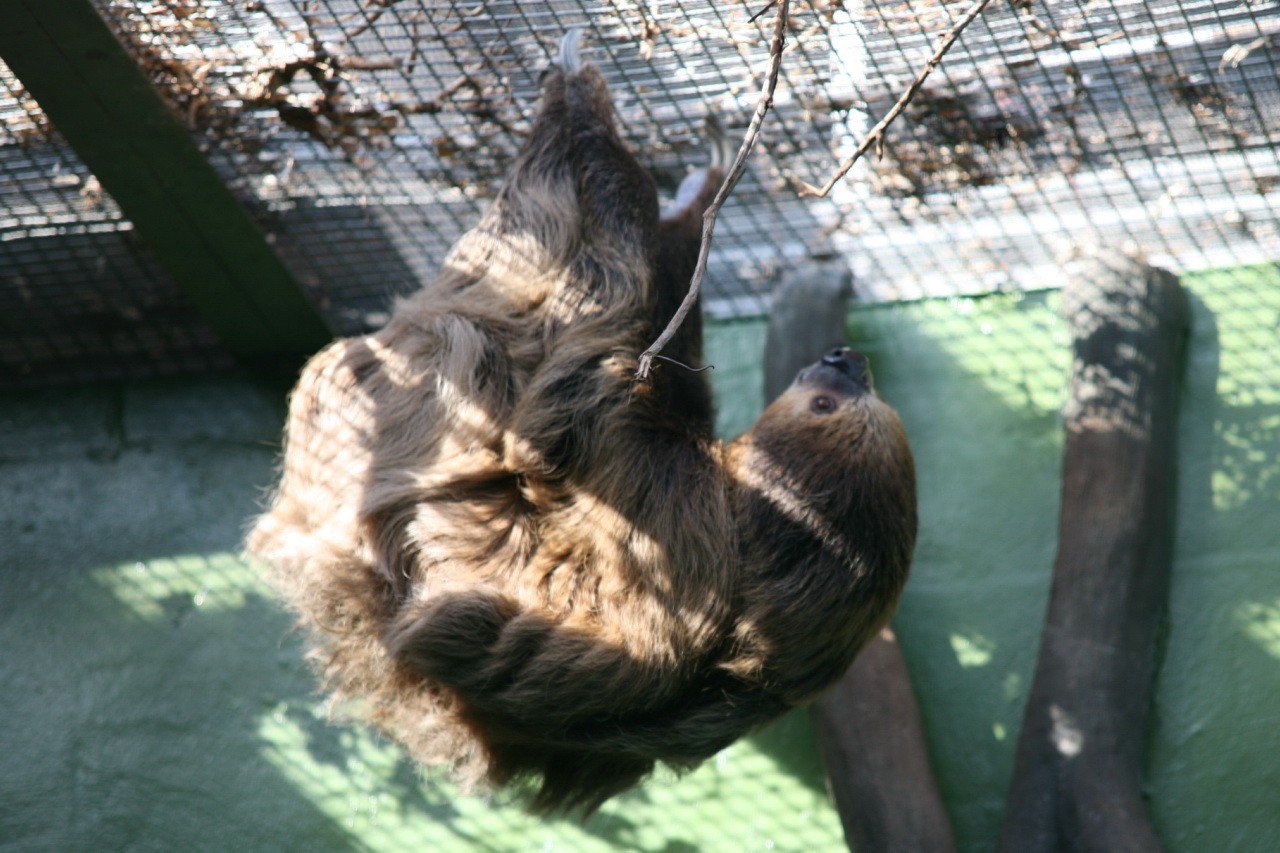Linnaeus's two-toed sloth
A species of Two-toed sloths, Also known as Unau Scientific name : Choloepus didactylus Genus : Two-toed sloths
Linnaeus's two-toed sloth, A species of Two-toed sloths
Also known as:
Unau
Scientific name: Choloepus didactylus
Genus: Two-toed sloths
Content
Description General Info
Description
The real two-toed sloth reaches a head-body length of 54 to 88 cm, the extremely short and hardly movable tail is between 0.9 and 2 cm long. The weight varies from 6.5 to 11.8 kg. The real two-toed sloth is thus slightly larger than its relative, the Hoffmann two-toed sloth (Choloepus hoffmanni). The differences between the sexes are small, so the females are slightly larger than the males. The head is generally small, but unlike the three-toed sloths it is longer. It generally has a rounded profile. The ears are small, around 2.8 cm long and not visible from the outside. The fur has only one layer, the top coat with up to 17 cm long hair. It is usually gray-brown in color, with the belly often appearing lighter than the back. The face is light brown and hairless and has a leathery texture. Depending on the incidence of light, especially in the rainy season, the fur shimmers slightly greenish. This goes back to a symbiosis with algae that live in the fur, whereby this symbiosis partly serves as camouflage against predators. The head of the fur is not on the back like other mammals, but on the belly like other sloths. This ensures that the rainwater can drain off better. The limbs are extremely long and end in two beams at the front and three at the back. These are about the same length and have long, curved claws. The hind foot length is up to 14.8 cm.
General Info
Lifespan
12-16 years
Diet
Linnaeus's two-toed sloth possesses a predominantly folivorous diet, primarily comprising of leaves, twigs, and fruit from over 50 plant species. It selectively feeds on younger leaves and ripe fruits for their higher nutritional content.
Appearance
Linnaeus's two-toed sloth has a large, elongated body with a slow, sloth-like appearance. Its thick, coarse fur is mostly grey-brown, but can appear greenish due to algae growth. The creature possesses long, curved claws used for climbing and feeding. Unlike other sloths, it has two toes on the front limbs and three on the hind limbs. The male and female generally resemble each other, with no significant variations in appearance.
Behavior
Linnaeus's two-toed sloth is a primarily arboreal, nocturnal species that sleeps during the day in tree nests. As a slow climber, it spends the majority of its time foraging for leaves, fruits, and shoots. Solitary in nature, linnaeus's two-toed sloth displays a scent-marking behavior to establish its territory. With adapted hindgut fermentation as a survival mechanism, it can digest many plant species that are toxic to other animals.
Population
Decreasing
Scientific Classification
Phylum
Chordates Class
Mammals Order
Anteaters and sloths Family
Sloths Genus
Two-toed sloths Species
Linnaeus's two-toed sloth 